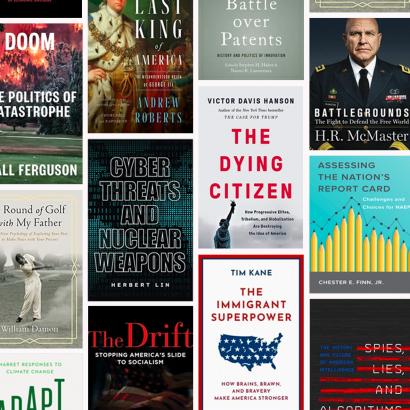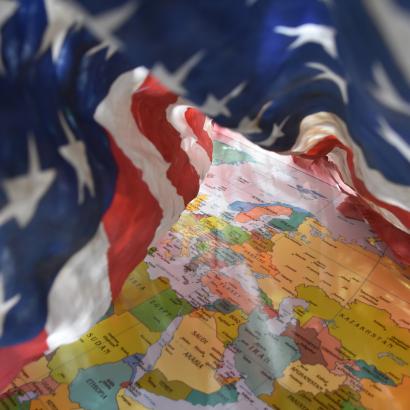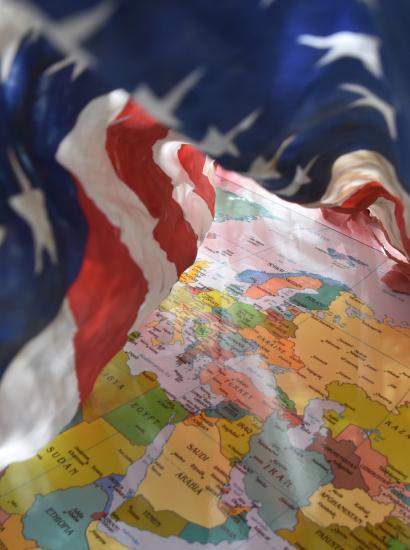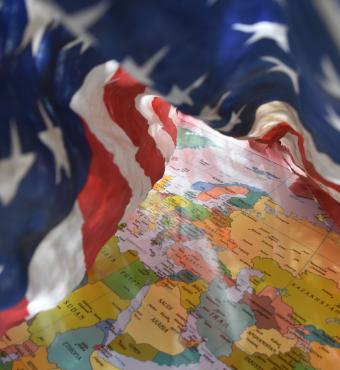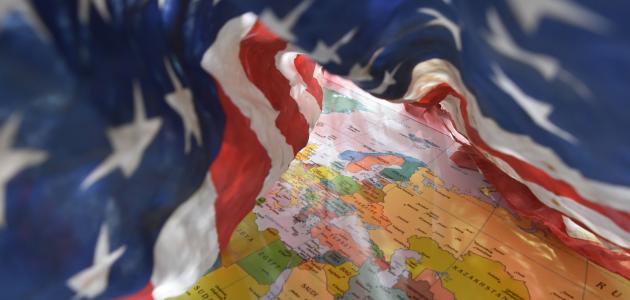- Middle East
- International Affairs
- Determining America's Role in the World
George W. Bush’s first overseas trip as President took him to Mexico. For Barack Obama and Joe Biden, their first visits were to the United Kingdom and other European allies. In contrast, Donald Trump chose to visit Saudi Arabia first in both his administrations–in May 2017 and May 2025. This choice sends a clear signal about his foreign policy vision and his priorities, and the matter deserves a close examination. In addition to striking geographical implications, it points to a conceptual frame regarding the fundamental tension between idealism and realism, between values and power. While Trump’s program has led to some notable successes, such as the Abraham Accords–even without Saudi participation so far–it has also led to some contradictions and difficult problems which will be discussed further below.
However, first, to evaluate the Trump agenda, it is useful to contrast the approaches his predecessors, Presidents Obama and Biden, took when they eventually visited the Middle East. Obama’s signature moment was his “New Beginning” speech of June 4, 2009, barely half a year into his first term. He delivered it at Cairo University, where it was co-hosted by Al-Azhar University, one of the oldest and most prestigious institutions of Islamic scholarship. That setting reflected several specific goals: a resetting of the relationship with the Islamic world, an effort to work against the spread of anti-Americanism in the Middle East, correcting the misperception of the U.S. as Islamophobic as well as, more conceptually, promoting Obama’s idealistic prioritization of the soft power of values over the hard power of force. To be sure, by insisting in Cairo on desiderata like democracy, women’s rights, and religious freedom, Obama articulated fundamental American ideals, but they were hardly–nor are they today–characteristic of Middle Eastern reality. For all the gestures of respect toward the Islamic world that Obama performed, the speech was characteristic of American idealist values promotion.
Not surprisingly, the Biden encounter with the Middle East and specifically with Saudi Arabia was marked by a cognate values agenda, yet in a different context. In the wake of the murder of the journalist Jamal Khashoggi in the Saudi embassy in Istanbul on October 2, 2018, public opinion in the U.S. understandably put considerable pressure on U.S.-Saudi relations. Trump’s statement that “the crime against Jamal Khashoggi was a terrible one, and one that our country does not condone,” was viewed by some Trump-critics as insufficient. It was denounced as evidence of the president’s “transactional” interest in maintaining a productive relationship with an important partner, despite the murder.
In contrast, in a Democratic primary debate a year later, candidate Biden struck a very different, harsher tone: “I would make it very clear we were not going to, in fact, sell more weapons to them [the Saudis–RB], we were going to make them pay the price, and make them, in fact, the pariah that they are.” Recalling this moment in U.S. politics is important because it highlights the difference between, on the one hand, the absolute priority of values for Obama and Biden, and on the other, Trump’s effort to elevate other interests at stake in inter-state relations. No amount of sanctimony can wish away those other interests, such as security and trade. Eventually even Biden had to temper his idealism with realism when he met with the Saudi Crown Prince in Jeddah on June 15, 2022, in pursuit of Saudi cooperation on oil prices.
Against that backdrop, returning to President Trump’s engagement with Saudi Arabia, one can see how he has shaped a different agenda, not only in his explicit praise for the Crown Prince in his Riyadh speech of May 13, 2025–pariah no more–but in the larger analysis of Saudi modernization. On this point, it is worth quoting a longer excerpt:
“Before our eyes, a new generation of leaders is transcending the ancient conflicts and tired divisions of the past and forging a future where the Middle East is defined by commerce, not chaos; where it exports technology, not terrorism; and where people of different nations, religions, and creeds are building cities together — not bombing each other out of existence.
“This great transformation has not come from Western interventionists … giving you lectures on how to live or how to govern your own affairs. No, the gleaming marvels of Riyadh and Abu Dhabi were not created by the so‑called ‘nation‑builders,’ ‘neo‑cons,’ or ‘liberal non‑profits,’ like those who spent trillions failing to develop Kabul and Baghdad, so many other cities. Instead, the birth of a modern Middle East has been brought about by the people of the region themselves … developing your own sovereign countries, pursuing your own unique visions, and charting your own destinies”--thus President Trump in Riyadh.
On the one hand, the passage articulates an analysis of developments in the Middle East in which the Gulf has succeeded in ways that Iraq and Afghanistan–two sites of costly and painful American involvement–have not. To be sure, one could offer the rebuttal that Afghanistan lacks the oil wealth of the Gulf, but the same is not at all true for Iraq. On the other hand–and more important for our effort to understand Trump’s foreign policy instinct–is his explicit criticism of efforts to impose Western values, ultimately the legacy of Wilsonian idealism. Instead, Trump points to the importance of sovereignty and local initiative. His critique of interventionism is not, as critics mistakenly claim, evidence of isolationism, but rather an appreciation of both the limits of American power and the primacy of the “unique visions” of partners overseas. Against that backdrop, Trump’s engagement with Saudi Arabia is very much about interests and realism: the energy market, investment in the U.S., attracting the Kingdom into the Abraham Accords, and ultimately competing against China for Saudi attention–if he were to pursue Biden’s “pariah policy” of maintaining a distance from the Crown Prince, the result would only be to push Riyadh into Beijing’s welcoming arms. Trump’s Saudi choice is therefore an expression of a foreign policy realism.
There is a different, second implication of Trump’s attention to Saudi Arabia. It is also a testament to the downgraded standing of locations which he has not prioritized in the same way. This pertains particularly to the European allies. The transatlantic relationship has been a cornerstone of U.S. foreign policy and defense architecture since the Second World War. In his first term, Trump visited Europe many times, even if Saudi Arabia came first on his list. His 2017 speech in Warsaw was an agenda-defining moment, where he pointed to security threats “from the South or the East,” meaning Muslim immigration or Russian aggression. The speech also showed how Trump–for all his realism–comes with a values agenda, albeit a set of conservative values. Hence his rhetorical question: “The fundamental question of our time is whether the West has the will to survive. Do we have the confidence in our values to defend them at any cost?”
So far in his second term, Trump’s European travel has been limited to the Vatican for the papal funeral (where he famously met with Ukrainian President Zelensky), the Netherlands for the NATO summit, and a private trip to Scotland, where he met with UK Prime Minister Starmer. Yet the important question is not about the specifics of foreign itineraries but rather the standing of Europe in his overall vision. During his first term, the effort to push Europeans, especially Germany, to meet the Wales Pledge goal of 2% of GDP to defense generated friction and the perception of an anti-European bias, at least in “old Europe,” i.e. the Western European countries. In his second administration, the decision to attack the Iranian nuclear sites apparently did not involve any prior consultation with European allies, and the tariff policy has contributed to tensions (although that aspect of the administration’s policies is hardly restricted to Europe). However, the most glaring diminishment of the relationship with Europe has been the choice to pursue negotiations with President Putin concerning Ukraine. European leaders made a valiant effort to find a common voice and influence Washington prior to the Alaska meeting, but their standing as secondary onlookers has been painfully evident. Even their subsequent gathering in the White House appeared like an afterthought.
It is therefore fair to say that the Trump administration’s prioritization of Gulf relations, as evidenced by the Saudi visits, indicates a relative decline in the importance of the traditional relations with Europe. To be sure, that demotion is hardly an abandonment. Trump has, after all, involved European leaders in the Ukraine policy through participation in the discussion with President Zelensky, yet only secondary to the Putin summit from which they were excluded. The Europeans are treated as friends, but as friends of diminished importance. Nor is this sidelining of Europe solely a feature of Trump policy: one should recall the Biden administration’s AUKUS program that abruptly undercut French interests. If the U.S–across parties of two administrations–is acting with less deference to Europe, this arguably has to do with a set of decisions made by Europe itself that has undercut its standing on the world stage–a topic for a different essay.
In sum, the Trump strategy is characterized regionally by a focus on Saudi Arabia and the Gulf and therefore with less attention to Europe, and conceptually by the emphasis on interests rather than values. To this should be added a consistent theme in Trump’s statements: a personal aversion to war and a preference for economics: business is better than violence. Whether this policy, sketched in broad strokes, will succeed is another matter for the next three and a half years. Before closing, however, two problematic consequences of Trump’s approach thus far should be pointed out.
First, the emphatic realism of Trump’s 2025 Riyadh speech–his dismissal of “the so‑called ‘nation‑builders,’ ‘neo‑cons,’ or ‘liberal non‑profits’”--stands in clear contrast with his appeal to Western values in Warsaw in 2017. One might attribute that difference to a transformation over eight years, except that Vice President Vance also foregrounded values differences when he attended the Munich Security Conference in February 2025. Vance complained about “the retreat of Europe from some of its most fundamental values–values shared with the United States of America.” In particular, he addressed restrictions on free speech, but the point here is not the validity of his specific complaints but rather the ambiguous standing of values in the Trump-Vance administration: they did not seem to matter much in Riyadh, but they became a major grievance point in Munich. This may represent a rift in the administration’s world view, between a transactional realism and a values advocacy. It may even point to a divide within the MAGA movement more broadly.
Secondly, and more germane to the Middle East, the focus on Saudi Arabia makes realist sense, but it may be carrying some unforeseen consequences. There is a fundamental competition for hegemony going on in the Muslim Middle East between Saudi Arabia and Turkey, both U.S. partners, the latter a vital NATO ally. These two partners are at loggerheads with each other. Erdogan stands for promoting versions of Islamism, while the Saudi Crown Prince has made an open and tolerant Islam part of his signature modernization reforms. U.S. Middle East diplomacy will have to figure out how to manage this rivalry if possible, and if not, then choose between the two.
The difference between Turkish Islamism and Saudi reformism is no abstract matter; it is playing out right now on the ground in Syria. Turkey is trying to turn the al-Sharaa regime into a client state comfortable with extremist elements. Meanwhile, Saudi is playing a catch up game to steer al-Sharaa away from radicalism. As part of that strategy, the Saudis appealed to Trump to tilt toward al-Sharaa in order to “liberalize” him. U.S. diplomacy has therefore appeared to promote the legitimacy of the centralized Syrian state. Yet by now that state–al-Sharaa and the forces that brought him to power–have blood on their hands: the massacres of Alawites around Latakia in April and the attack on the Druze in July, especially in Suweida. In each assault, the number of fatalities at the hands of the Islamists approached the death toll of the Hamas attack in Israel on October 7, 2023. The U.S. should not be on the side of such perpetrators. Strengthening ties with Riyadh makes sense for lots of reasons, but it should not involve endorsing Islamists in power in Damascus. Hopefully U.S. diplomacy will be able to steer Damascus away from Islamist inclinations--which would of course bring it closer to the Saudi model.


